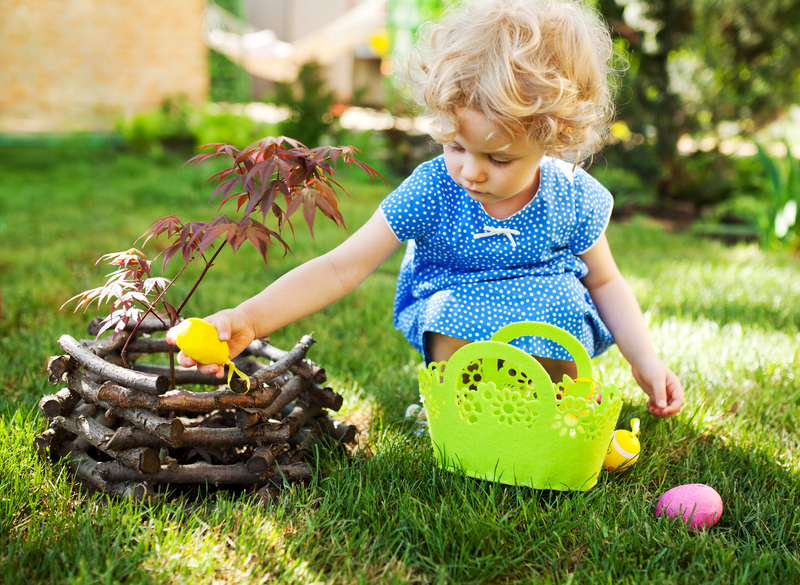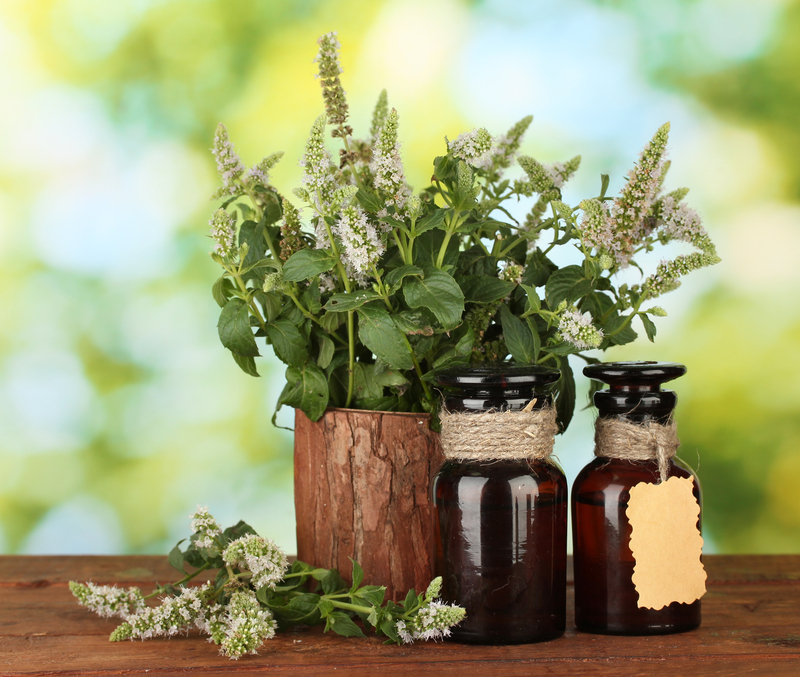Achieve a Sparkling Stovetop by Removing Burnt-on Messes
Posted on 22/06/2025
Achieve a Sparkling Stovetop by Removing Burnt-on Messes
A clean kitchen radiates warmth and comfort, but nothing detracts from that inviting glow quite like a grimy, stained stovetop. Whether you're dealing with burnt-on food, stubborn grease, or pesky stains, maintaining a spotless stove can be challenging. In this comprehensive guide, you'll discover tried-and-true methods for removing burnt-on messes and achieving a sparkling stovetop that shines with pride.
Why a Clean Stovetop Matters
Keeping your stovetop pristine goes beyond appearances. It impacts appliance longevity, cooking efficiency, and even food safety. Burnt-on residue can harbor bacteria, cause uneven heating, and, over time, degrade the surface of your cooktop. Moreover, regular cleaning reduces the chance of accidental fires and costly repairs.
- Improved Cooking Performance: A clean stove ensures even heat distribution, leading to better meals.
- Longer Appliance Life: Consistent cleaning preserves your stovetop's finish and function.
- Safer Kitchen Environment: Removing grease and residue reduces fire hazards.

The Different Types of Stovetop Messes
Before you can effectively clean your stovetop, it's important to identify the type of mess you are dealing with. Each mess requires a slightly different approach for optimal cleaning:
1. Burnt-On Food
These crusty, blackened spots are often the result of sauce spills or overflows that aren't wiped up immediately. The longer they sit, the harder they become to clean.
2. Grease Buildup
Grease splatters may not seem like a big deal at first, but over time, they can form an oily, sticky layer that attracts dust and other debris.
3. Stains from Cookware
Pots and pans, especially those made from cast iron or copper, can leave stains if dragged across the surface or if food spills out during cooking.
How to Remove Burnt-On Messes from Any Stovetop
With the right tools, techniques, and know-how, achieving a sparkling stovetop by removing burnt-on messes is well within your reach. Below you'll find step-by-step instructions tailored to the most common stovetop types: gas, electric coil, and glass/ceramic.
General Precautions Before Cleaning
- Always unplug electric stoves or turn off the gas supply before cleaning.
- Ensure the stovetop is completely cool to prevent burns.
- Read your manufacturer's recommendations for cleaning products and methods to avoid voiding warranties.
Essential Supplies You'll Need
- Microfiber cloths or soft sponges
- Baking soda
- White vinegar
- Dish soap
- Razor blade scraper (for glass tops)
- Plastic spatula (for gas/electric)
- Soft-bristled brush
- Spray bottle
- Optional: Stove cleaning creams or degreasers
Step-by-Step Cleaning Methods for Every Stovetop
Cleaning Burnt-On Messes from a Gas Stovetop
- Remove Grates and Burner Caps: Lift off grates and burner caps and soak them in hot, soapy water for 10-15 minutes.
- Wipe Away Loose Debris: Use a dry cloth to brush away food particles and crumbs.
- Treat Burnt-on Spots: For stuck-on spills, make a paste of baking soda and water. Apply to the mess, let sit 15 minutes, then gently scrub with a soft brush or non-scratch sponge.
- Use Vinegar for Grease: Spray white vinegar over greasy sections and let sit for 10 minutes. Wipe with a microfiber cloth.
- Scrape Carefully: If any residue remains, use a plastic spatula to gently remove burnt-on food without scratching the surface.
- Clean Grates and Burner Caps: Scrub grates and caps with a stiff brush, rinse, and dry before replacing.
- Final Polish: Buff the clean stovetop with a dry cloth for added shine.
How to Remove Burnt-On Messes from Electric Coil Stoves
- Remove Coil Burners: Once cool, unplug coil burners if possible.
- Clean Drip Pans: Remove drip pans and soak in hot, soapy water. If they're very grimy, add a spoon of baking soda to the water for extra power.
- Scrub the Surface: Use a soft sponge and a mixture of dish soap and warm water to wash the surface. Avoid getting the electrical connections wet.
- Address Stubborn Messes: For burnt-on debris, apply baking soda paste and let sit before scrubbing.
- Clean the Coils: Wipe the coils with a damp sponge (never submerge them). If needed, use a brush to remove stubborn residue.
- Dry and Reassemble: Let all parts dry thoroughly before putting the stove back together.
Achieving a Sparkling Glass or Ceramic Cooktop
Glass and ceramic tops require extra care to prevent scratches but removing burnt-on messes is straightforward with the right method.
- Apply Baking Soda Paste: Sprinkle baking soda over stubborn spots, then spray with white vinegar. Let it fizz for several minutes.
- Cover and Wait: Place a wet towel over the area for 15 minutes to loosen the residue.
- Gently Scrape: Hold a razor blade scraper at a 45-degree angle and gently slide under the burnt debris. Do not gouge or dig at the stain.
- Buff with a Clean Cloth: After debris is removed, wipe the area with a damp microfiber cloth.
- Polish: Use a stovetop cleaning cream for a streak-free shine.
Homemade Solutions for Stubborn, Burnt Stovetop Messes
Baking Soda and Vinegar Power Combo
- Mix three parts baking soda with one part water to form a thick paste.
- Apply to burnt-on patches and spray with white vinegar.
- Allow to bubble and sit for 15-30 minutes before scrubbing.
Lemon Juice for Shine
- Lemon's natural acid lifts stains and freshens the kitchen.
- Rub a halved lemon over the area, let sit, then wipe clean.
Salt and Baking Soda Scrub
- Mix equal parts of salt and baking soda.
- Sprinkle on wet messes, let sit 5 minutes, and scrub with a damp sponge.
Prevent Burnt-On Stovetop Messes
While it's important to know how to remove burnt-on messes, an even better approach is prevention. Here's how you can minimize greasy disasters before they happen:
- Wipe Spills Immediately: Use a damp cloth or paper towel to clean up spills as soon as they happen.
- Use Splatter Guards: When frying or cooking foods prone to bubbling over.
- Cover Your Pans: to keep sauces and oils contained.
- Clean your stovetop at least once a week to prevent buildup.
- Place a foil liner or silicone mat under burners or on drip pans for easier cleanup.
Stovetop Cleaning FAQs
What's the best way to clean a glass stovetop without scratching?
Use a non-abrasive cleaner and a microfiber cloth. Avoid steel wool or rough pads. For burnt-on food, only use a razor blade held flat against the surface.
Can I use bleach on my stovetop?
It's not recommended for most stovetops due to possible damage and lingering chemical smells. Stick to gentle, kitchen-safe cleaning products.
How can I remove burnt sugar or caramel stains?
Soak the area with hot, soapy water and use the baking soda-vinegar method. For glass, a razor blade scraper is effective if you work slowly and gently.
Can I clean electric burner coils in the dishwasher?
No. Coils may be damaged by water exposure. Wipe with a damp cloth instead.
How to Maintain a Sparkling Stovetop in the Long Run
- Create a Routine: Wipe down your stovetop daily before residues harden and become burnt-on messes.
- Deep Clean Monthly: Remove burners, grates, and drip pans for a thorough cleaning once a month.
- Use specialized stovetop-cleaning creams or degreasers if you cook frequently.
- Check the manufacturer's guidelines before using commercial products to avoid damaging surfaces.
- Keep a small cleaning kit under the sink for quick access--baking soda, vinegar, and a microfiber cloth go a long way.
Eco-Friendly Alternatives for Stovetop Cleaning
Want a sparkling stovetop without harsh chemicals? Try these greener solutions:
- White Vinegar: Dissolves grease and disinfects.
- Baking Soda: Non-toxic and effective mild abrasive.
- Citrus Peels: Soak peels in vinegar for a few days, strain, and use as a natural degreasing spray.

Professional Tips for a Spotless Stovetop
Expert cleaners recommend always starting with the gentlest cleaning method and working up to stronger solutions only as needed. Frequent light cleaning is more effective--and less work--than occasional heavy scrubbing.
- Never pour large quantities of water on electric or gas stovetops.
- Test new cleaning products on small, inconspicuous areas first.
- Regularly clean under knobs and around burners where grime can hide.
Conclusion: Enjoy a Sparkling Stovetop Every Day
By removing burnt-on messes promptly and with the right technique, you can achieve a sparkling stovetop that makes your whole kitchen shine. Not only will your appliance work better and last longer, but you'll enjoy cooking in a clean and inviting space. Establish a routine, act quickly when spills happen, and use the natural cleaning solutions outlined here.
Your path to a brilliant, spotless stove is just a good cleaning session away. With these comprehensive tips and a little effort, every meal can begin with shine and end with satisfaction!




